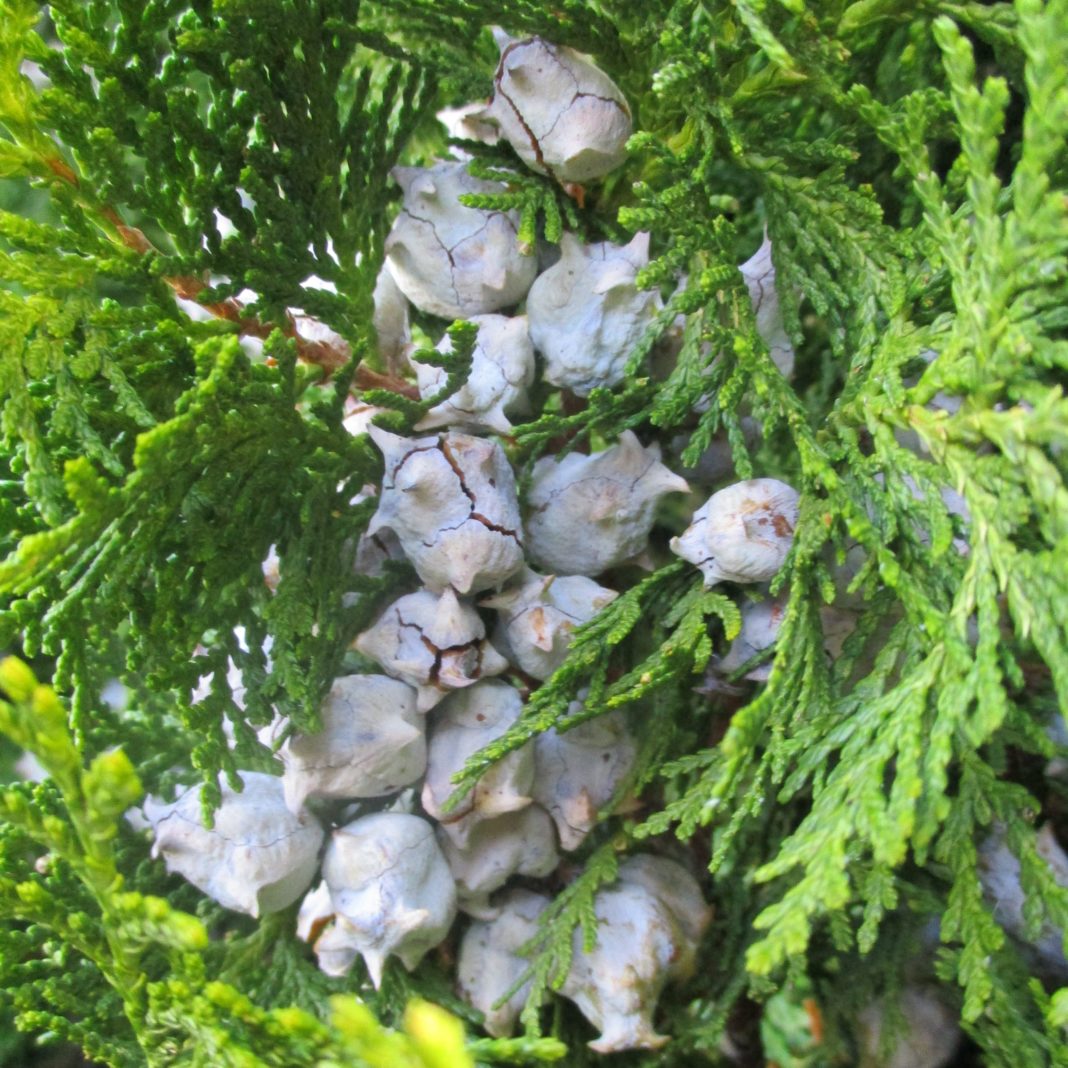UNITED STATES—There should be no guilt associated with a cut Christmas tree. They were stigmatized many years ago, when some people believed that they were harvested from forests, and more of them likely were back then. However, most of us now know that, except for a few that actually are harvested from the wild, Christmas trees are grown on farms like most other cut foliage or horticultural crops.
That is how Christmas trees get their nice Christmas tree form. Only spruce and a few types of firs grow so densely and symmetrically in the wild; and spruce are not commonly cut as Christmas trees. Almost all types of Christmas trees need to be pruned or shorn for density, symmetry and maybe even form. Most of the foliage for wreaths and garlands is likewise grown on foliage farms.
Contrary to popular belief, living Christmas trees are no more environmentally responsible than cut trees are. They are farm grown and artificially irrigated exotic (non-native) trees in vinyl cans filled with synthetic media (potting soil) and synthetic fertilizers. Just like cut trees, they need to be shorn unnaturally. Then, after all that effort, most die and get discarded after Christmas anyway.
Those that survive are usually more trouble than they are worth. Because they are exotic, they should not be planted out in the wild. Because their roots are confined, they would not survive without irrigation through the first year anyway. A few types that grow slowly and maintain density might stay potted and be brought in at Christmas for a few years, but that requires diligent maintenance.
The worst problem with living Christmas trees is that they often get planted into home gardens that can not accommodate them. Few people know what kind of tree their living Christmas tree is, or realize how big it can get. Some trees are Italian stone pines or Canary Island pines, which simply get too large. Even junipers, arborvitaes and smaller pines need adequate accommodations. Arborists can attest to damage caused by living Christmas trees in bad situations.
Highlight: dwarf golden arborvitae
These pale blue . . . whatever they are, were just too cool to pass up without a picture. Technically, they are the ‘cones’ of dwarf golden arborvitae, Platycladus orientalis (formerly Thuja orientalis) ‘Aurea Nana’. They do not look much like cones. They are only about three quarters of an inch long, and are rarely as profuse as they are here. They are less appealing as they dry and turn brown.
Dwarf golden arborvitae grows nicely while young, then slows significantly once it gets only a few feet high. Mature specimens may not get as tall as six feet, with nicely rounded form and cheery yellowish foliage. Other uncommon cultivars that are not dwarfed can eventually reach second story eaves, with greener foliage. Flat sprays of soft evergreen scale foliage is suspended vertically.
Foliage is brightest yellow when fresh and new in spring, and then fades somewhat through summer, so that it might be yellowish green by this time of year. In frostier climates, exposed tips can get bronzed through winter. Partial shade is not a problem, but subdues foliar color. Dwarf golden arborvitae, although quite resilient once established, prefers good soil and occasional watering.
Horticulturist Tony Tomeo can be contacted at https://tonytomeo.wordpress.com/






